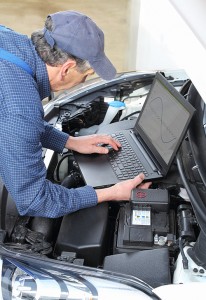 Students are heading back to school. New college students on their own for the first time face a lot of challenges and nervous parents back home face fears of the unknown. If parents are sending their student off with a car, there are technologies that help limit the speed and other functions or even track the whereabouts of the car in real time. While these technologies are not new, they can allay some of the fears of the parents of young drivers. Let’s take a look at some.
Students are heading back to school. New college students on their own for the first time face a lot of challenges and nervous parents back home face fears of the unknown. If parents are sending their student off with a car, there are technologies that help limit the speed and other functions or even track the whereabouts of the car in real time. While these technologies are not new, they can allay some of the fears of the parents of young drivers. Let’s take a look at some.
Limiting Functionality
The folks at Ford have developed what they call MyKey. One key fob becomes the administrator key and the other inherits limited functionality. The administrator key can limit the speed of the car, cap the volume of the radio and keep it muted until the seatbelt is secure, ensure that all safety features are automatically turned on, and can set nagging seat belt chimes and deliver an earlier low fuel warning. The non-administrator key receives these settings. Although, I can see an enterprising young student in Engineering 101 or Computer Science 101 figuring out a way to reverse the settings in order to enjoy unfettered driving. This system also could keep a spouse with a lead foot out of trouble, but in that case, their partner holds the administrator key.
Tracking
A lot of modern vehicles have satellite navigation and many are also equipped with a GPS tracker for locating the car. This is important when a car is stolen but can also give peace of mind to a worried parent. General Motors has developed Family Link to be used in conjunction with their OnStar system. A family member can access Family Link online through their account and see the current location of the vehicle. They can also set up alerts to show when the car has arrived at its destination or where the car is at a specific time, curfew for example. I assume and hope that the folks at GM have built in a very strong security layer to prevent stalkers from accessing that same information. The technology is similar to that used by outdoor enthusiasts to broadcast their location in case they get into trouble and cannot communicate.
Some may see this technology as intrusive, but tracking a new driver or a family member driving in inclement weather might lessen the anxiety.
Thoughts
These technologies exist today, both as standard equipment or after-market. They can be plugged into the on-board computer and give early warning about failing mechanical or electrical systems or limit functionality. All of these technologies are designed to provide information or to ensure the safety of drivers, particularly first time drivers. Do you think these devices limit freedoms or promote more freedom for young drivers? I guess it partly depends on whether you are the one holding the administrator key or the other key.
Kelly Brown is an IT professional and assistant professor of practice for the UO Applied Information Management Master’s Degree Program. He writes about IT and business topics that keep him up at night.


